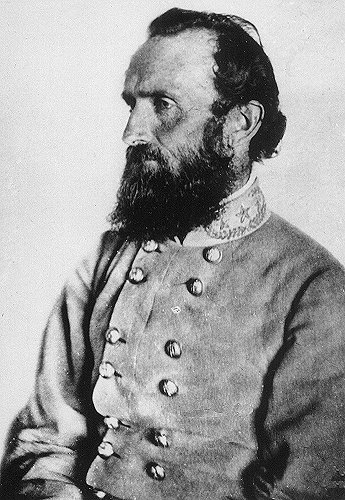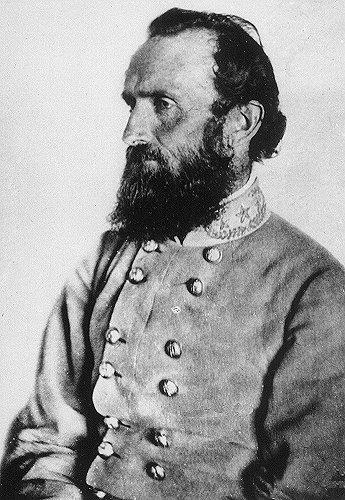
Stonewall Jackson’s Arm

I was walking through a cornfield in search of a cemetery in the middle of Virginia. A fox trotted across the path in front of me and disappeared in the forest of stalks with barely a rustle. I was searching for Stonewall Jackson’s lost arm.
Stonewall Jackson, a general in the Confederate Army, was a fanatical Presbyterian and a hypochondriac who sucked on lemons for their taste but avoided black pepper for his health. He was fearless in the face of death and received his nickname for standing “like a stone wall” against an onslaught of Union gunfire at First Manassas. But one May night in 1863, after a victory over Hooker’s forces, Jackson took advantage of the darkness to scout ahead of his own line. When he returned, a group of North Carolina pickets mistook him for the enemy and opened fire. Four of Jackson’s men were killed and three bullets lodged in his left arm. Later that night the arm was amputated; the next day it was buried.

I drove through Chancellorsville National Military Park with my eyes open for anything that looked like it might lead to a cemetery. Late in the day, in a gray misty rain, having already given up, I pulled into a driveway to turn around and stopped short at a rusty iron gate with soldered block letters, E L L W O O D.
I hesitated. It was clearly a locked gate, but a faint trail led around it and continued through dense woods. While I didn’t want to trespass, I didn’t want to retreat either. The mystery of the arm was too great; I left the car in the driveway.
The dark woods increased my sense of unease, but also my curiosity. I didn’t know if I was heading toward the cemetery or the twin barrels of a shotgun, but I walked until the trees gave way to a clearing. An abandoned barn leaned into a surrounding cornfield. Two vultures eyed me from its sagging roof but I kept going. I wanted to find the arm.
A small sign pointed to a path through some boxwoods, then cornstalks. Although I could hear an occasional car in the distance, it felt like I had stepped back in time. Just ahead was another clearing, and under a lone tree, encircled by a knee-high iron fence, was the graveyard. Among the nubs of worn stone marking the family graves was another stone, only slightly taller, engraved with “Arm of Stonewall Jackson May 3 1863.”
The place was eerie, but I was starting to appreciate its otherness—the suspicious vultures, the reassuring drone of the crickets filling what would have been an uncanny silence, the fox, the tree, the stone. It was hard to imagine this as a battle site with 100,000 men fighting, many dying. It was hard to imagine the aide with his box and his shovel, standing on this same spot, about to do his last duty to the arm of his commander. It was hard to imagine the arm, now a bone, nestled in its box under the earth. And how it had once been attached to a man who had taught philosophy at the Virginia Military Institute, married a minister’s daughter, fathered a baby girl and, after leading his division of the Army of Northern Virginia through some of the War’s most decisive battles, finally died of pneumonia in a small weathered cottage a week after the amputation.
The graveyard was silent and still, aside from the crickets and the breeze through the grass. The mist blurred the boundaries of the woods and the fields, and I felt the distance in time closing—the distance between the burial of this arm and my looking at its gravestone—and I knew I wouldn’t need anything else to remember this moment.
